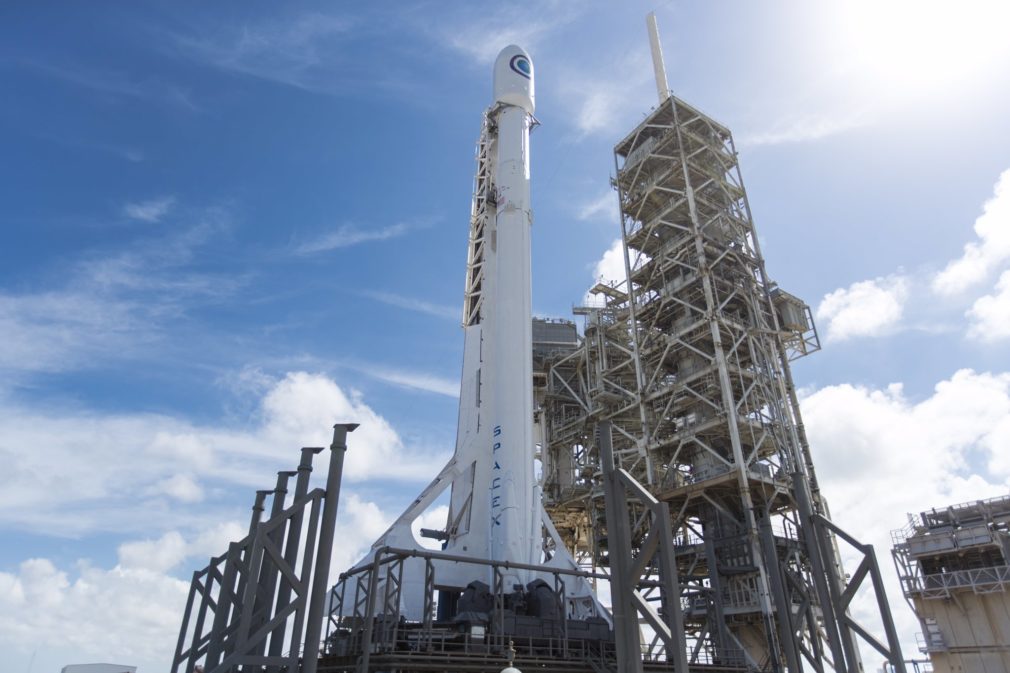Elon Musk is not one to back down and take a breather from his ambitions. Private space exploration is one of the primary objectives of this legendary innovator. SpaceX has already made its impression in this relatively new ecosystem, which was once controlled only by government-backed companies. And before ferrying the human race to Mars, making them multi-planetary, the private space firm is looking to envelop the Earth with high-speed internet-beaming satellites.
SpaceX yesterday appeared before the U.S Senate Committee on Commerce, Science and Technology to outline its plan for the same. The company is looking to build an intricate network of satellites capable of streaming broadband-speed, low-latency Internet to the surface of the Earth. And expects the same to be operational in the coming two years. Crazy, ain’t it?
Patricia Cooper, SpaceX’s vice president of satellite government affairs told the senate members that their private space company is gunning for the launch of a prototype satellite this very year. Once the company completes tests on the first one, it plans to launch a new satellite in early months of 2018. It has already filed a request with the Federal Communications Commission to conduct these tests back in 2015.
The prototypes will demonstrate that privately-built spacecrafts are also capable of launching satellites and providing Internet access to us Earthlings. If all tests are successful, SpaceX plans on start building a complete network of satellites operating in the Ka and Ku band across Earth in 2019. It will become instantly operational, once delivered to the low Earth orbit (between 1,110 kilometers and 1,325 kilometers) by their very own Falcon 9 rockets. This orbit is being chosen to reduce costs and reuse time — for which the goal is 24 hours.
This system will also require associated ground control facilities, gateway earth stations, and end user earth stations. The initial system is designed to provide a wide range of broadband and communications services for residential, commercial, institutional, governmental, and professional users worldwide.
This idea birthed in Musk’s brilliant mind back in the early 2015s. It is not only aimed at providing connectivity resources to 3 billion internet users but also bring in some extra capital to the company. While SpaceX is working extremely hard to be remembered as the only reusable orbital rocket company. It has even landed back a used Falcon 9 rocket booster on the ground — other times at sea.
The same reiterates the primary objective of reusability but the costs involved in launching a rocket are very high. The margins, on the hand, not very. It plans on distributing the Internet, that’ll be beamed from the network of satellites to people to compensate for their costs. It does sound like a difficult but rather interesting mission, especially because of the total number of satellites SpaceX plans on deploying to blanket Earth — 4,425 — which is nearly three times those already present in orbit around Earth.
This SpaceX initiative is alarmingly ambitious — but achievable. The private space company plans to deploy a monstrous network of 4,425 communication satellites which provide high-speed internet coverage across the globe. These satellites will be carefully placed in 83 orbital planes — to not leave out any blind spots in their network. This satellite network would simplify how “fiber-like” internet connectivity is provided to consumers by using advanced technologies, most likely AI and ML.
To implement the system, SpaceX will utilize the availability of significantly more powerful computing and software capabilities, which will enable SpaceX to allocate broadband resources in real time.
But, that’s not where SpaceX complete its ambition. The private space agency will complete the aforementioned processes by 2024. It will be highly optimized by timely software updates and satellite design upgrades. That will, however, not satisfy SpaceX’s yearning for building an efficient internet-beaming network, according to Cooper.
Hence, it intends on deploying yet another constellation of 7,500 satellites that’ll operate in the V-Band frequency. They’ll be placed even closer to the planet, around an altitude of around 1,000 kilometers to further reduce latency and serve higher speeds. This does sound like something Musk could’ve only brewed.
As for the consumers, they’d require a small-ish device (roughly the size of a laptop) to catch the signals being dissipated by the mesh network of satellites. The company is has been described in the official document, presented by SpaceX before the senate committee as under:
For the end consumer, SpaceX user terminals — essentially, a relatively small flat panel, roughly the size of a laptop — will use similar phased array technologies to allow for highly directive, steered antenna beams that track the system’s low-Earth orbit satellites.
The Tech Portal is published by Blue Box Media Private Limited. Our investors have no influence over our reporting. Read our full Ownership and Funding Disclosure →





